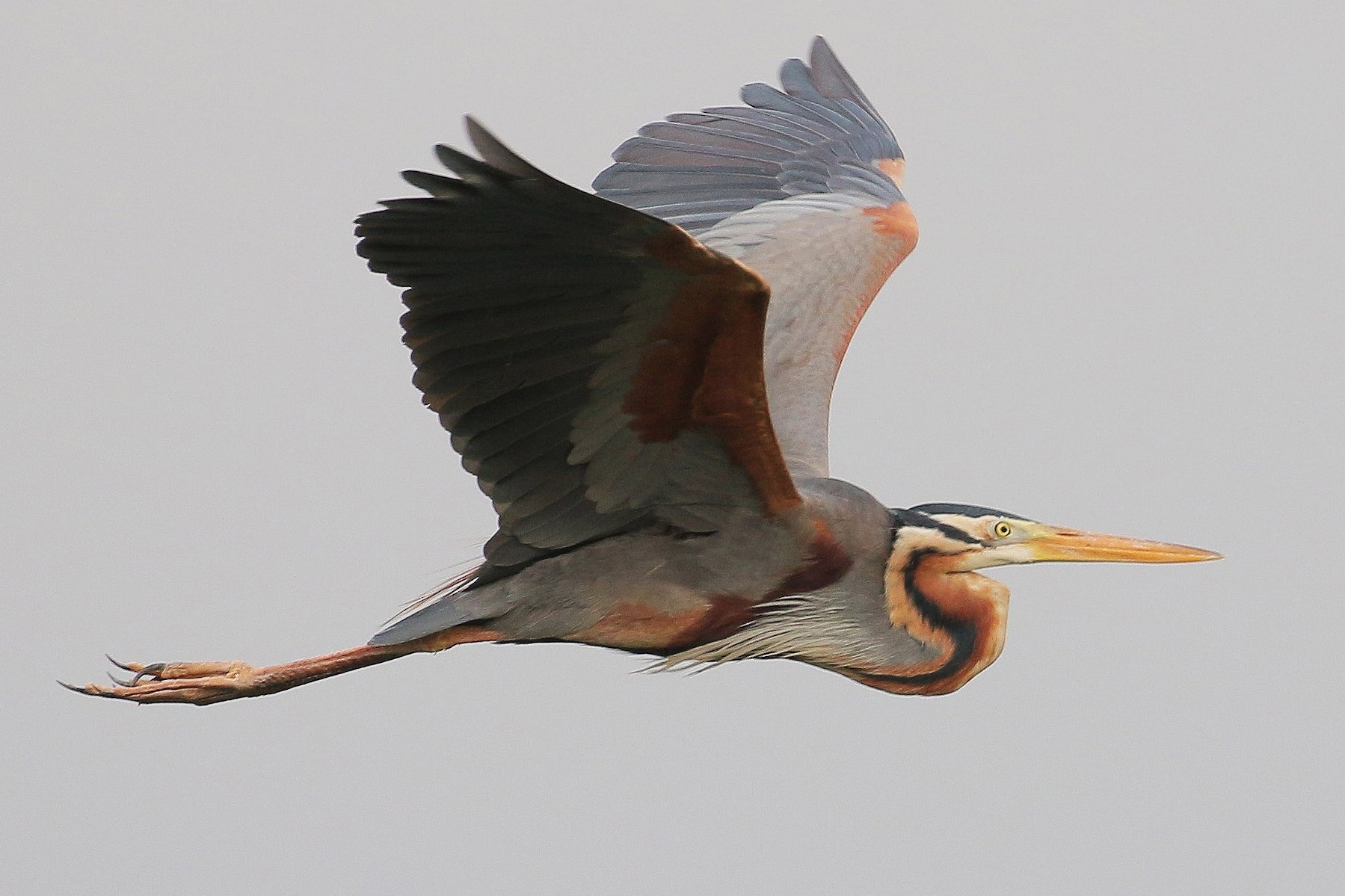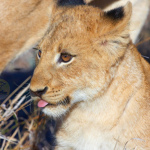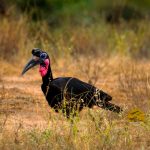The Graceful Purple Heron: A Stunning Resident of Uganda’s Wetlands
Purple Heron – Birds of Uganda. Uganda, commonly referred to as the Pearl of Africa, has great diversity in wildlife, and wetlands host several species of birds very attractive to nature and birds; Among these, the Purple Heron Ardea purpurea is considered one of the most beautiful and graceful birds, which has captured the hearts of many birdwatchers and nature lovers. This article talks about the distinctive features, habitats, and merits of Purple Heron in Uganda.
Appearance and Characteristics.
The Purple Heron is a medium-sized heron with outstanding plumage and characteristic markings. Adults reach 78 to 90 centimeters in length, with their wingspan stretching from 120 to 150 centimeters. The general hue of the feathers is ash-gray with bright, iridescent purple and blue tints in just the right light. They have a long, thin neck and a sharply pointed beak, which turns them into perfect hunting tools for the catching of aquatic life.
Habitat of Purple Heron.
Purple Herons mainly occur in wetlands, marsh, and shallow waters of Uganda; hence, the numerous lakes, rivers, and swamps the country boasts are ideal for their habitat; These birds are very secretive and are often seen standing still in the water, patiently waiting for their prey to come closer to them. Its cryptic plumage assists in camouflage in the surroundings. Places to spot the Purple Herons include shores of River Nile in Murchison Falls National Park.
Diet and Behavior – Purple Heron.
Skilled hunters, Purple Herons have a rather varied diet that includes important composition of fish, frogs, insects, and small mammals. They adopt different hunting methods from standing in place to stalking prey by means of slow, deliberate steps. Suddenly, at the opportune moment, they strike with speed and great precision, usually swallowing catch whole.
Breeding and Conservation.
These birds have probably one of the most extravagant courtship displays. During the breeding season, they perform astonishing flying, acrobatic maneuvering with highly complex behaviors. They nest high in trees, reed beds, or thick vegetation, beyond the reach of almost all predators, especially those ground-dwelling ones. Twisted sticks and reeds are formed into nests that guard their juveniles.
Although not currently considered a globally threatened species, the survival of the Purple Heron relies highly on wetland conservation and its ecological system. Wetlands support not just this great bird but many other species too and are important contributors to general environmental health.
Ecological Importance.
Purple Herons are also an important part of the ecosystem to keep fish populations in check and for maintaining wetland habitats. Their presence indicates good health of the environment and acts as a barometer for the wetlands they exist in.
Remarks on Purple Heron | Birds of Uganda
The Purple Heron is, of course, one of Uganda’s major treasures as regards its outstanding looks and importance in the wetlands; As Uganda struggles to give more protection and conservation to its flora and fauna, the purple heron can only stand out as a pretty reminder of the fragile ecosystems that need care; A great sight to tourists who are either birdwatchers or nature lovers, experiencing the presence of such a gracious avian species in its natural environment is an indelible memory.












